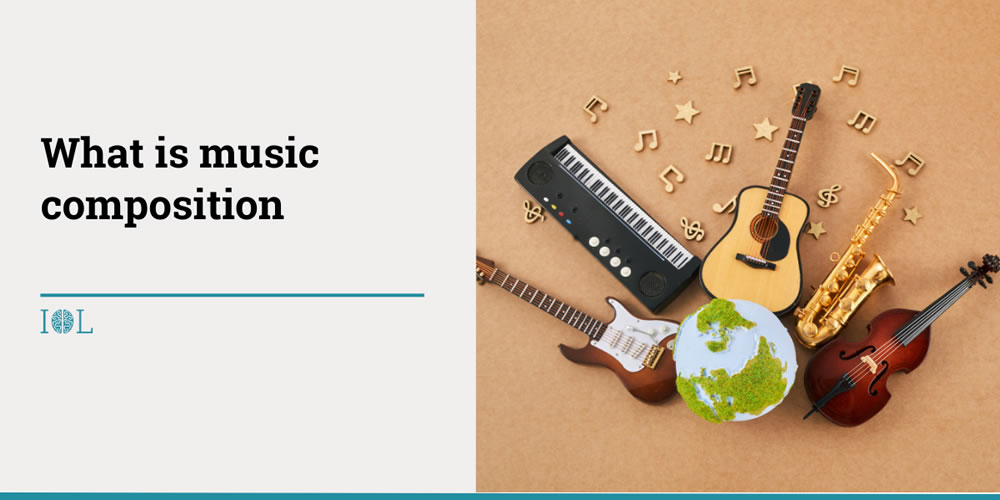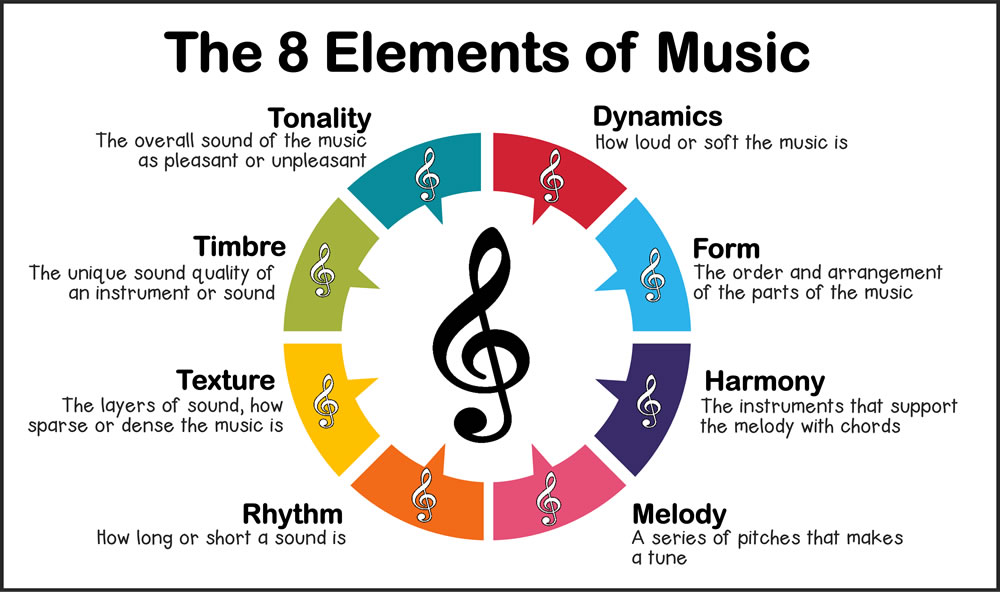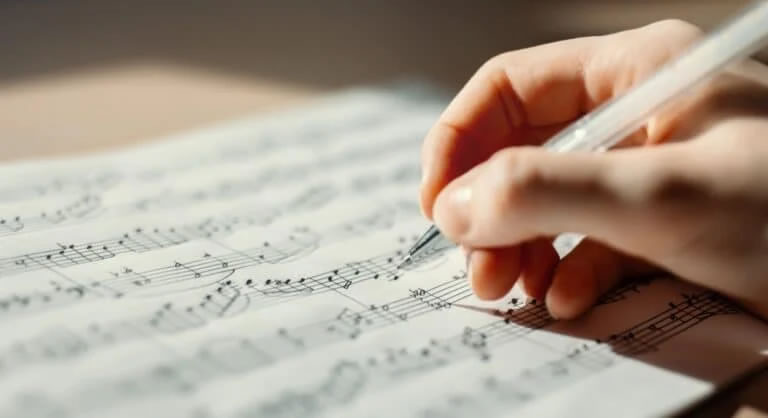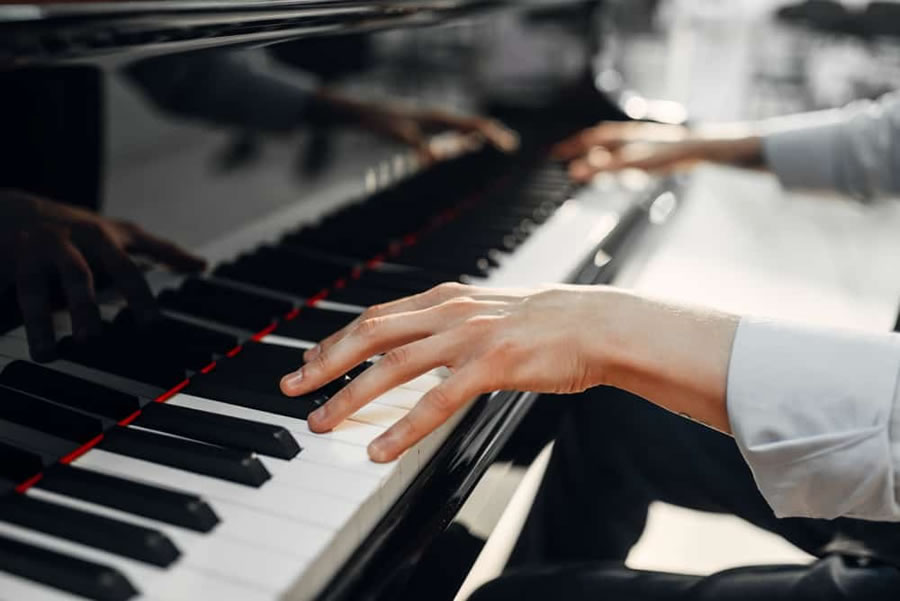So, what’s the secret to getting started? It’s all about breaking it down step by step. Stick with me—by the end of this article, you’ll have a clear path to creating your first song. Ready? Let’s dive in.
What Is Music Composition?
Music composition is the art of creating music from scratch. It’s not just about throwing random notes together. It’s about crafting something that moves people. Think of it as storytelling through sound.
You’ve likely heard a favorite song and thought, “How did they even come up with this?” The answer lies in structure. Composers use tools like melody, harmony, and rhythm to bring their ideas to life. And the best part? You don’t need to be classically trained. Modern tools and techniques make composing accessible to anyone with a passion for music.

Essential Elements of Music Composition
Every song you love is built on a few basic building blocks. Let’s break them down:
Melody: The Heart of a Song
Think of melody as the main character in your story. It’s the tune you hum in the shower or whistles on your way to work. Without it, the music feels empty.
Here’s a tip: Start simple. A melody doesn’t have to be flashy to be memorable. Try playing around with just a few notes. Experiment until something sticks.
Harmony: Building Depth and Emotion
If melody is the main character, harmony is the supporting cast. It’s what gives a song richness and emotion. Think of the chords under a melody—they’re the backbone of the music.
Want to create a mood? Experiment with major chords for a happy feel or minor chords for something more emotional. Trust your ears to guide you.
Rhythm: The Pulse of Your Music
Rhythm is the heartbeat of your song. It’s what makes people tap their feet or dance along. Without rhythm, music wouldn’t feel alive.
Here’s a trick: Clap out a simple beat and build your composition around it. Sometimes, the rhythm is all you need to get started.
Lyrics: Telling a Story Through Words (Optional)
Not all music needs lyrics, but if you’re writing a song, words can take it to another level. Lyrics add a layer of storytelling. They connect with listeners on a personal level.
Feeling stuck? Start with a single phrase or idea. Write about something meaningful to you—it’ll make the process much easier.

Get Started with Music Composition
Now that you know the basics, how do you begin? Let’s keep it simple.
Choose Your Instrument or Digital Tools
What’s your go-to instrument? Guitar, piano, or even your voice? Start there. Don’t have an instrument? No problem. Digital tools like GarageBand or FL Studio are great for beginners.
Even a basic setup can teach a lot about creating melodies and chords. Experimentation is key, regardless of the instrument or software being used. The goal is to find what feels natural and sparks creativity.
Set the Mood: Deciding on a Genre and Style
Before you write a single note, ask yourself: What vibe do I want? Pop? Jazz? Classical? Your answer will shape your choices.
For example, if you want an upbeat pop song, focus on catchy melodies and driving rhythms. Writing something moody? Slow it down and experiment with minor chords.
Understand Basic Music Theory
You don’t need to be an expert, but a little music theory goes a long way. Learn about scales, chords, and key signatures. They’re like the grammar of music—essential for building something cohesive.
There are plenty of online tutorials that break theory into bite-sized lessons. Trust me, it’s worth the effort.

The Composition Process
Time to put it all together. Here’s how to go from idea to finished song.
Find Your Inspiration
Great music starts with a spark. Maybe it’s a mood, a memory, or even a random sound. One time, I wrote an entire song inspired by the hum of a washing machine. Inspiration is everywhere.
Keep a notebook or voice recorder handy. Capture ideas as they come—you’ll thank yourself later. Some people even find inspiration by listening to other music. Not to copy it, but to let it ignite fresh ideas. It’s like giving your creativity a little jumpstart.
Sketch Your Song Structure: Verse, Chorus, and Bridge
Most songs follow a structure. A common one? Verse, chorus, verse, chorus, bridge, chorus. It’s simple but effective.
Think of the verse as the setup and the chorus as the big payoff. The bridge adds variety and keeps things interesting. And don’t worry if your first few tries feel a bit clunky. Song structures are like blueprints—they can be revised as you go.
Experiment with Chords, Scales, and Patterns
This is where the fun begins. Play around with different chords and scales. Don’t be afraid to make mistakes. Some of the best ideas come from happy accidents.
Try this: Pick three chords and loop them. Sing or play a melody over the top. You’ll be surprised how quickly things come together. Another tip? Mix it up with unexpected chord progressions. A little surprise can make a song memorable.

Advanced Tips for Music Composition
Feeling confident? Let’s explore some advanced techniques.
Explore Unconventional Time Signatures and Keys
Most pop songs stick to 4/4 time. But why not try something different? A 3/4 or 7/8 time signature can give your music a unique twist. These unusual rhythms can keep listeners intrigued and add a layer of sophistication to your work.
Similarly, experiment with keys outside your comfort zone. A key change can add drama and excitement. For example, shifting to a minor key in the bridge can evoke a completely different mood before returning to the original key for a powerful resolution.
Create Emotional Impact with Dynamics
Loud. Soft. Somewhere in between. Dynamics are all about volume and intensity. Use them to take listeners on an emotional journey. A whisper-like verse followed by a soaring, explosive chorus can create a rollercoaster of feelings.
Here’s a tip: Don’t rely solely on volume. You can create dynamics by layering instruments, playing with texture, or even pausing the music briefly for dramatic effect. Silence can be just as powerful as sound.
Use Technology: Digital Audio Workstations (DAWs)
DAWs are game-changers for composers. They let you layer instruments, experiment with sounds, and polish your tracks. They’re also perfect for trying out ideas before committing to them.
Not sure where to start? Programs like Logic Pro and Ableton Live are beginner-friendly. Spend some time exploring their features. Use loops and samples to inspire ideas or add depth to your work. And don’t forget to take advantage of virtual instruments. Even if you can’t play a violin, you can still add its beautiful sound to your composition.
Another pro tip? Use plugins to shape the sound of your tracks. From reverb to delay, these tools can add professional polish to your music.
Final Take
Music composition doesn’t have to be intimidating. It’s about experimenting, learning, and, most importantly, having fun. Whether you’re strumming a guitar, tapping on a keyboard, or composing digitally, the key is to start.
Remember, every composer—even the greats—started with a single note. So, grab your instrument (or open your DAW) and begin. Who knows? Your next idea could be the start of something unforgettable.























